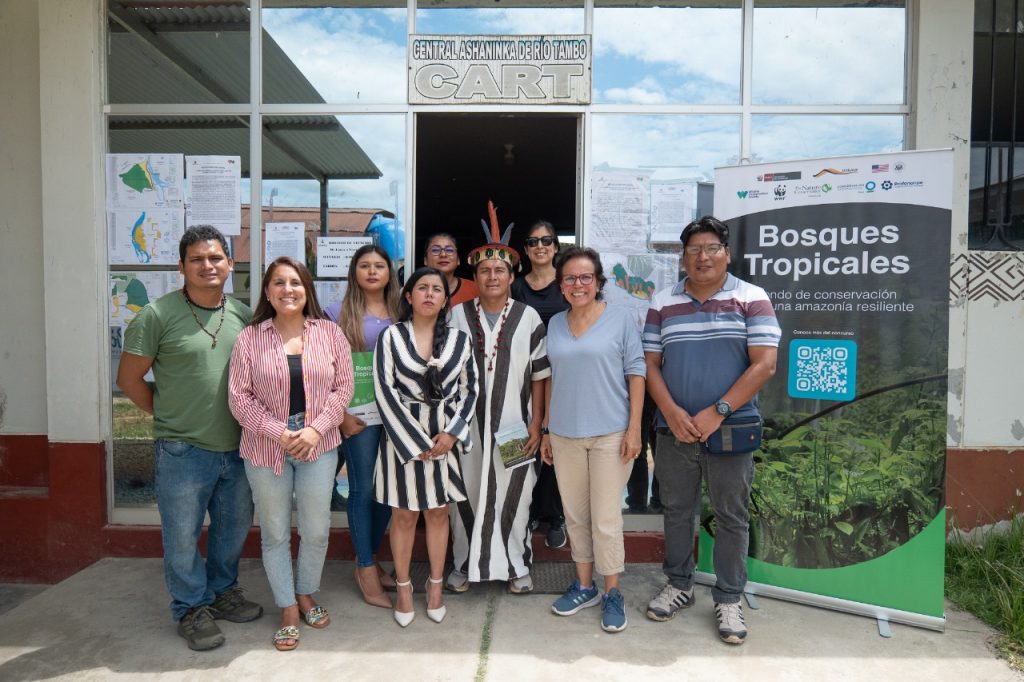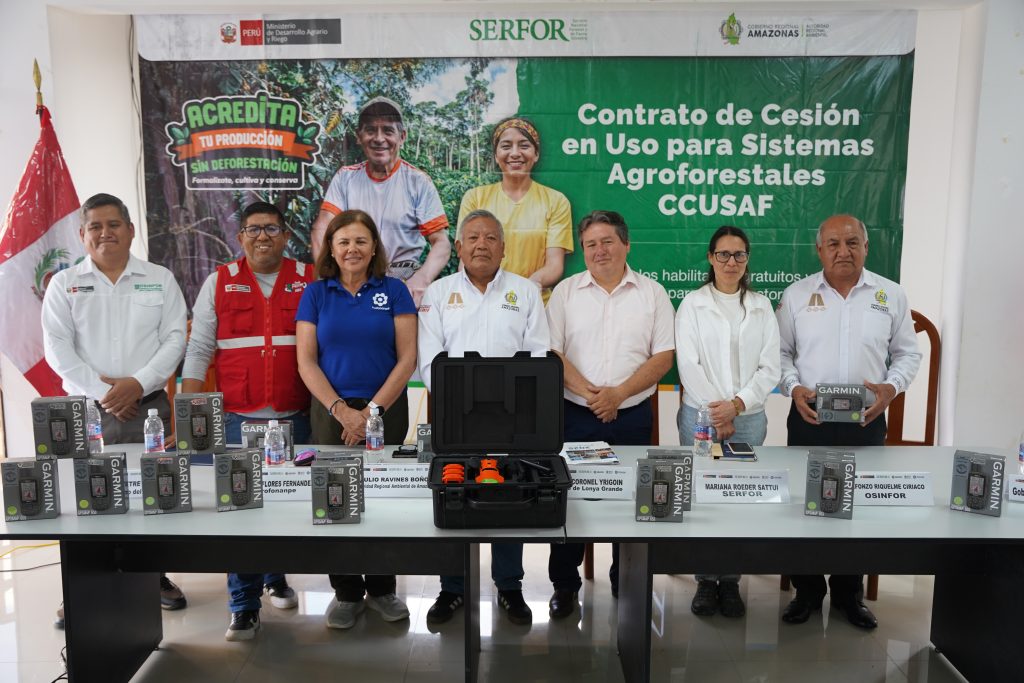Yuliana Castro, Manager of Communications and Corporate Affairs at Profonanpe, talks with Luis Espinel, Vice President of Conservation International Peru about the importance of the debt-for-nature swap.
In 2023, Peru turned a multi-million dollar debt into a historic opportunity to protect its tropical forests and strengthen the communities that inhabit them. Through a debt-for-nature swap, nearly US$20 million that would have been destined to pay foreign debt will be invested over the next ten years in the Peruvian Amazon through the Tropical Forests Competitive Fund, an initiative that channels direct resources for the conservation and sustainable development of strategic territories.
This financial mechanism, used only in exceptional cases worldwide, is the focus of the second debt-for-nature swap between Peru and the United States, promoted by both governments with the participation of international conservation and civil society organizations. The experience marks a new milestone in environmental cooperation and positions the country as a regional benchmark in financial innovation for conservation.
“The debt swap is a very interesting mechanism between two countries. Instead of paying the debt, these resources stay in the country to invest in conservation and development of our Amazon,” explains Luis Espinel, executive director and vice president of Conservation International Peru, in episode 4 of the Natural Capital podcast.
This mechanism has an important precedent. The first swap, administered by Profonanpe, was signed in 2002 and made it possible to conserve 18 Natural Protected Areas between 2002 and 2014. Its success (both in resource management and institutional articulation) served as the basis for this new stage, which is projected until 2035.
“We learned a lot from that first experience. The big lesson was that investments must generate sustainable and long-term impacts in the Amazon and in the lives of the communities that inhabit it,” Espinel adds.
In this new edition of the Tropical Forests competitive fund, resources will be allocated to three landscapes prioritized for their high ecological value and the pressures they face: Southern Amazon, Northern Amazon and Central Amazon. The first call focused on the southern landscape and received 46 applications from indigenous organizations, several NGOs and local associations. The first group of winners will receive US$3 million to implement their initiatives.
The $20 million committed through the swap represents a sustained effort over a decade, with the challenge of ensuring its efficient implementation in such a large and diverse territory. The swap has an estimated duration of ten to twelve years, and the funds are non-reimbursable grants. “They are grant funds that go directly to the organizations to implement their projects,” Espinel remarks.

In this episode of Natural Capital, we reflect on how the Peruvian and U.S. governments are betting on forest conservation.
One of the keys to this mechanism is its governance. An Oversight Committee oversees the proper implementation of the resources and is composed of the Peruvian Ministry of Environment, the National Service of Natural Areas Protected by the State, the U.S. Government, and international organizations such as Conservation International, World Wildlife Fund, Wildlife Conservation Society, and The Nature Conservancy.
The technical and financial execution of Tropical Forests is the responsibility of Profonanpe, a private entity that administers the resources and coordinates its implementation in the field. The function of this governance scheme is to ensure that the funds effectively reach the territory, that they benefit the communities, and that they comply with the law governing these types of swaps.
Another fundamental aspect is that this mechanism is led by the State, together with three environmental organizations, which provide strategic guidelines for its implementation. The interventions financed by the swap aim to fill gaps that public financing does not currently cover and create synergies with national programs such as Procompite or Avanza Rural.
“The leadership of the Ministry of the Environment and the participation of SERNANP in the Committee allow direct articulation with public policies and ensure that these investments add to state efforts,” explains Espinel.
The prioritized projects focus on sustainable economic activities such as value chains for cacao and non-timber forest products, strengthening the management of protected natural areas, and community initiatives that conserve strategic landscapes. The participation of indigenous communities and territorial organizations is central to this process.
Cecilia Huamanchumo de la Cuba, head of Profonanpe’s Tropical Forests project, says: “This first call for proposals for the Tropical Forests Competitive Fund demonstrates a high level of interest from key actors in the Amazon. The participation of indigenous organizations, NGOs, communities and cooperatives is evidence that there is an active territorial base committed to conservation. This mechanism seeks precisely to channel resources to those who are on the front line, strengthening their role in forest protection and generating sustainable impacts over time.”
The impact of this model has aroused the interest of other governments. Peru is seen as a reliable and efficient country in the management of resources for conservation, which could open the door to new agreements with countries that have similar mechanisms. “Peru is a country of opportunities and that is what different governments are seeing. They are looking to bring in funds to help us conserve our tropical forests and confront climate change,” Espinel points out.
More than debt relief, this agreement represents a long-term commitment to the Amazon and to financial innovation applied to conservation. It is an example of how international cooperation mechanisms can translate into tangible benefits for the country and its communities.
«This swap demonstrates that conservation can be financed in creative and effective ways. It is an opportunity for communities, organizations and the State to work together for the Amazon,» Espinel concludes.
This interview was given as part of the Capital Natural podcast, an initiative led by Profonanpe that can be listened to on YouTube and Spotify.
Listen to the episode “Debt-for-nature swap: financing conservation in an innovative way – Episode 4” of the Capital Natural podcast, here: https://www.youtube.com/watch?v=3CFK94A8U0Q&t=62s












